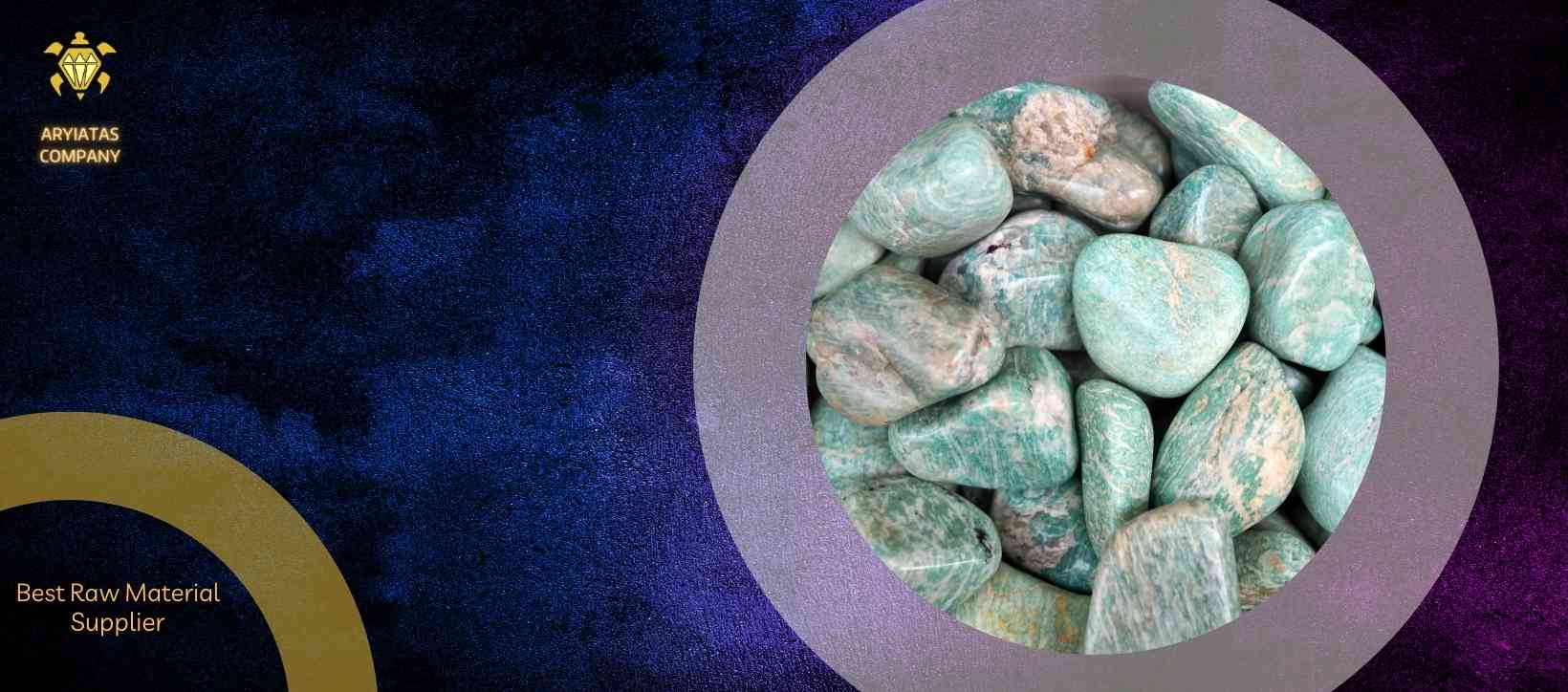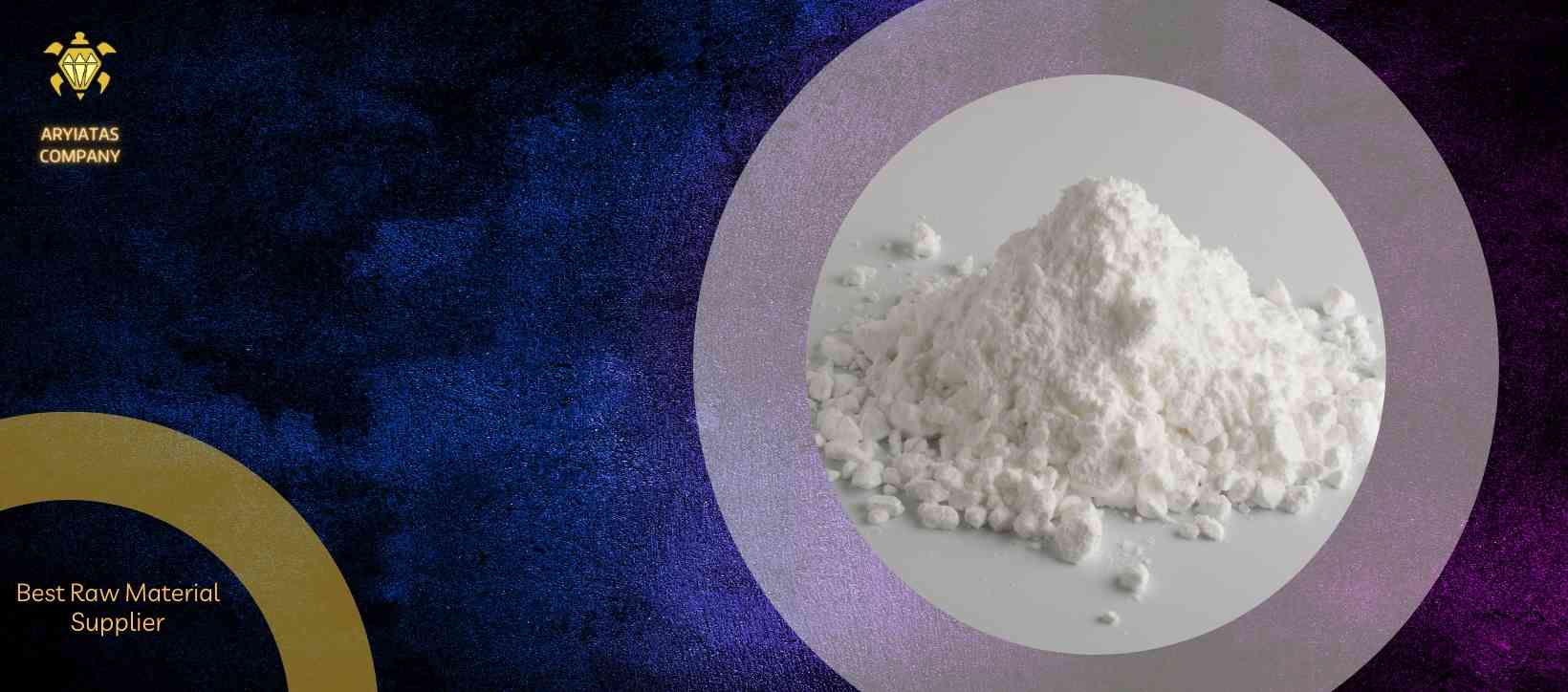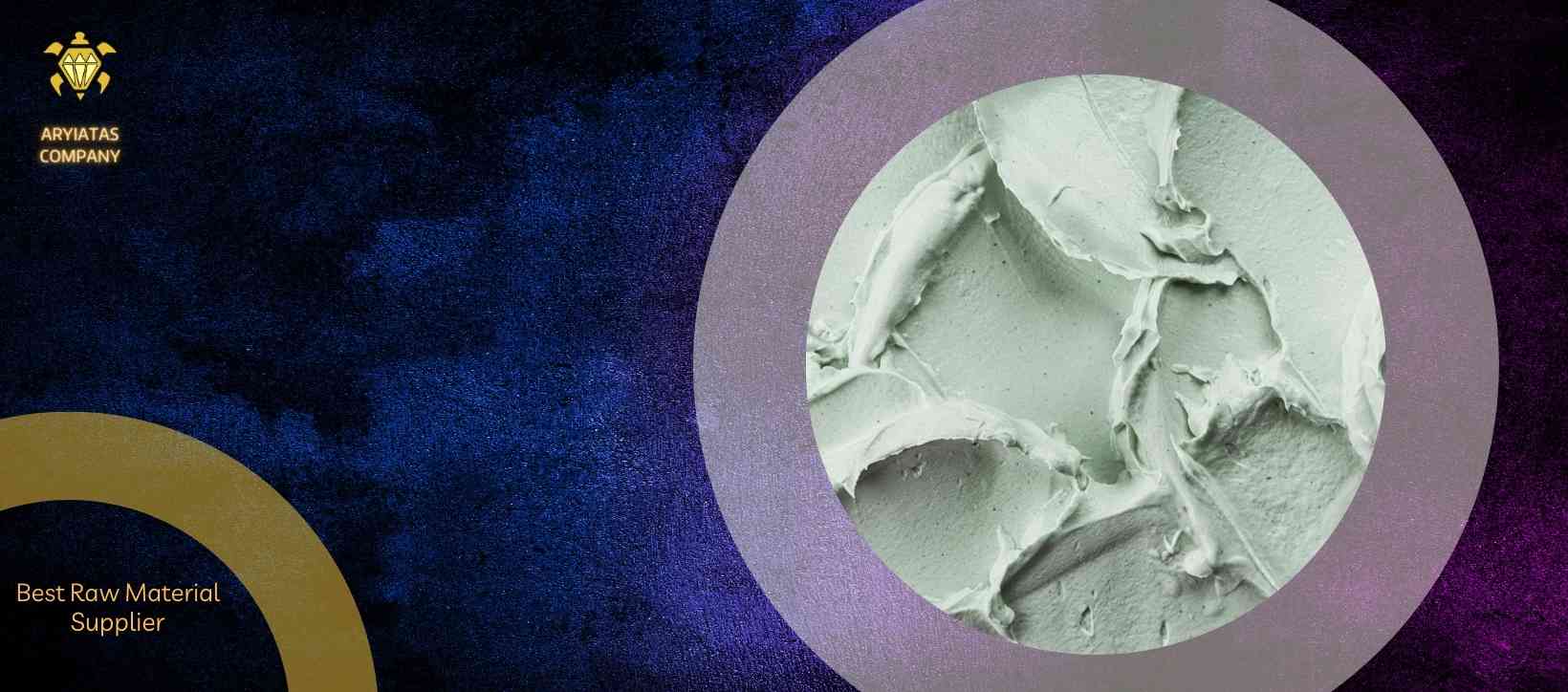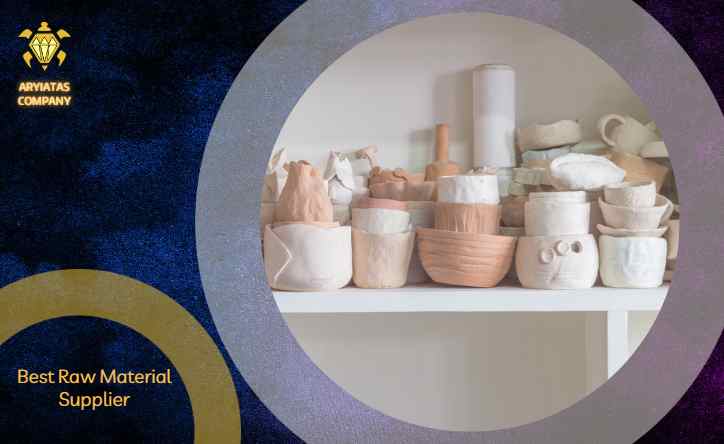Porcelain, a prized ceramic material known for its beauty, strength, and versatility, has a rich history dating back centuries. Behind its exquisite appearance and durability lies the careful selection and utilization of raw materials during the production process. The raw materials for porcelain production play a crucial role in determining the final characteristics, aesthetics, and performance of the finished products.
The primary raw materials for porcelain production are clay, feldspar, silica, and kaolin. Each material brings unique properties and contributions to the porcelain manufacturing process. Clay provides the plasticity and workability necessary for shaping the ceramic body, while feldspar acts as a flux, reducing the melting temperature and enhancing fusion during firing. Silica, typically sourced as quartz or silica sand, promotes strength and translucency in porcelain, and kaolin, a type of clay mineral, refines the ceramic body and enhances its whiteness.
The sourcing of these raw materials is a critical aspect of porcelain production. Clay deposits are mined from the earth, while feldspar and silica can be obtained from both natural sources and synthetic alternatives. Kaolin, with its unique properties, is carefully extracted and processed to meet the stringent requirements of porcelain production.
Once the raw materials are sourced, they undergo a meticulous manufacturing process that involves blending the materials in specific proportions, shaping the mixture into desired forms, and subjecting them to high-temperature firing. This firing process vitrifies the materials, creating a dense, glassy structure that gives porcelain its distinctive characteristics of strength, translucency, and resistance to heat and chemicals.
Understanding the raw materials for porcelain production is vital for manufacturers, artisans, and enthusiasts alike. It allows for informed material selection, process optimization, and the creation of porcelain products that meet the desired standards of quality, beauty, and functionality. In the following sections, we will delve deeper into the properties, sourcing methods, and manufacturing processes associated with each raw material, highlighting their significant contributions to the art and science of porcelain production.
This article explores the essential raw materials for porcelain production used, including clay, feldspar, silica, and kaolin. We delve into the properties, sourcing methods, and manufacturing processes associated with these raw materials, highlighting their importance in shaping the final product and ensuring its aesthetic appeal and functionality.
Clay: The Foundation of Porcelain
Clay forms the foundation of porcelain production and is a key raw material in creating the ceramic body of porcelain. It provides the necessary plasticity and workability for shaping and molding the desired forms. Clay used in porcelain production is typically kaolinite clay, which is known for its high purity and fine particle size.

The sourcing of clay for porcelain production involves mining and extraction processes. Clay deposits are found in various regions around the world, and different sources of clay can yield variations in mineral composition and properties. Clay mines are carefully selected to ensure high-quality clay with consistent characteristics.
The properties of clay greatly influence the final quality and appearance of porcelain. One crucial property is the plasticity of the clay, which refers to its ability to be shaped without cracking or breaking. Plasticity allows for intricate detailing and precise molding of porcelain objects. Kaolin clay, with its unique particle size and mineral composition, offers excellent plasticity, making it well-suited for porcelain production.
Another important property of clay is its shrinkage behavior during the drying and firing processes. As clay dries and is exposed to high temperatures during firing, it undergoes a significant reduction in size. Understanding and controlling the shrinkage is crucial to avoid deformations or cracks in the porcelain products. Clay with consistent shrinkage characteristics is preferred to ensure uniformity and precision in the final porcelain pieces.
The color of the clay also plays a role in porcelain production. White or light-colored clays are commonly used to produce translucent and pristine porcelain. The purity and whiteness of the clay contribute to the final aesthetics of the porcelain products, providing a clean canvas for glazing or decorative finishes.
In addition to its physical properties, the chemical composition of the clay affects its behavior during firing. The presence of impurities, such as iron oxide or organic matter, can influence the color, translucency, and strength of the porcelain. Therefore, high-quality clay with low levels of impurities is preferred to achieve the desired characteristics in the final porcelain products.
During the manufacturing process, clay is carefully blended with other raw materials, such as feldspar, silica, and kaolin, in specific proportions to create the ceramic body of porcelain. The clay mixture undergoes shaping techniques, including slip casting or throwing on a wheel, to form the desired shapes. The shaped clay objects are then dried and subjected to high-temperature firing, typically in kilns, where the clay particles fuse together to create a dense and vitrified structure.
In conclusion, clay serves as the foundation of porcelain production, providing plasticity, workability, and the base composition for the ceramic body. The sourcing of high-quality clay, with its specific properties and characteristics, is crucial to ensure consistent and desirable results in porcelain manufacturing.
Understanding the properties and behavior of clay during the firing process allows porcelain manufacturers to create exquisite and durable porcelain products that exhibit the beauty and strength for which porcelain is renowned.
Feldspar: Enhancing Fusion and Thermal Expansion
Feldspar is a vital component in porcelain production, playing a significant role in enhancing fusion during firing and controlling the thermal expansion of the ceramic body. It acts as a flux, reducing the melting temperature of the clay mixture and promoting the fusion of the raw materials.

The sourcing of feldspar involves both natural deposits and synthetic alternatives. Natural feldspar is found in various regions worldwide, and different types of feldspar, such as potassium feldspar (orthoclase), sodium feldspar (albite), and calcium feldspar (anorthite), offer different mineral compositions and properties. Synthetic feldspar, which is chemically formulated to mimic natural feldspar, can also be used in porcelain production.
One of the key properties of feldspar is its ability to lower the melting temperature of the ceramic body. By adding feldspar to the clay mixture, the overall fusion temperature is reduced, allowing for more efficient firing and energy savings during the manufacturing process. The fusion of the raw materials results in a dense and vitrified structure, giving porcelain its strength and durability.
In addition to its fluxing properties, feldspar also plays a crucial role in controlling the thermal expansion of porcelain. Thermal expansion refers to the change in volume or size of a material as it is heated or cooled. Feldspar, with its unique mineral composition, helps regulate the thermal expansion of the ceramic body, ensuring that it has appropriate thermal stability and is less prone to cracking or warping during temperature fluctuations.
The selection of the appropriate type of feldspar is essential in achieving the desired characteristics of porcelain. Different types of feldspar have varying fluxing capabilities and thermal expansion coefficients, which directly impact the final properties of the porcelain. The proportion of feldspar in the clay mixture also needs to be carefully controlled to maintain the proper balance between fluxing and thermal expansion.
The addition of feldspar to the clay mixture affects the aesthetics of porcelain as well. Depending on the type and quantity of feldspar used, it can influence the color and translucency of the final product. Some types of feldspar, such as potassium feldspar, can impart a milky or opalescent appearance to porcelain, adding to its visual appeal.
During the firing process, feldspar undergoes chemical reactions with other components of the clay mixture, contributing to the formation of a glassy matrix within the porcelain. This glassy matrix enhances the strength and impermeability of the ceramic body, making it more resistant to water absorption and chemical attack.
To ensure the optimal use of feldspar in porcelain production, quality control measures are implemented. The feldspar should undergo rigorous testing to assess its chemical composition, fluxing properties, and thermal expansion characteristics. This ensures that the feldspar meets the specific requirements of the desired porcelain product and maintains consistency in the manufacturing process.
In conclusion, feldspar serves as a critical component in porcelain production, enhancing the fusion of raw materials during firing and controlling the thermal expansion of the ceramic body. Its fluxing properties reduce the melting temperature, promoting efficient firing, and creating a dense and vitrified structure in porcelain.
The selection of the appropriate type and proportion of feldspar is essential to achieve the desired characteristics and aesthetics of porcelain. Through careful sourcing, testing, and quality control, porcelain manufacturers can harness the benefits of feldspar to create exquisite and durable porcelain products.
Silica: Promoting Strength and Transparency
Silica plays a crucial role in porcelain production, contributing to the strength, translucency, and aesthetic appeal of the final products. As a primary raw material, silica is typically sourced as quartz or silica sand and is a key component in the ceramic body of porcelain.

One of the notable properties of silica is its ability to promote strength in porcelain. When heated during the firing process, silica particles undergo structural changes, resulting in the formation of a glassy phase within the ceramic body. This glassy phase adds strength and hardness to the porcelain, making it more resistant to chipping, cracking, and wear. The presence of silica also contributes to the overall density of the ceramic body, enhancing its durability and longevity.
In addition to its strength-enhancing properties, silica is responsible for the translucency that is characteristic of fine porcelain. The arrangement and size of silica particles in the ceramic matrix influence the degree of light transmission through the porcelain. Finely ground silica particles, evenly dispersed within the ceramic body, allow light to pass through the material, creating a translucent effect. This translucency adds to the aesthetic beauty of porcelain, giving it a delicate and ethereal appearance.
The purity and quality of the silica used in porcelain production are crucial factors in achieving desired results. Impurities, such as iron oxide or other mineral contaminants, can adversely affect the color, clarity, and translucency of the porcelain. Therefore, sourcing high-quality silica with minimal impurities is essential to maintain the desired characteristics of the final product.
The amount of silica used in the ceramic body is carefully controlled to achieve the desired balance of strength and translucency. Excessive amounts of silica can lead to a higher degree of opacity, resulting in less translucency in the porcelain. Conversely, insufficient silica content may compromise the strength and structural integrity of the ceramic body. Porcelain manufacturers carefully consider the desired aesthetic and functional properties when determining the appropriate silica content in their formulations.
Silica also influences the firing process and temperature control during porcelain production. As a refractory material, silica has a high melting point and requires sufficient heat to undergo the necessary structural transformations. Understanding the behavior of silica during firing is crucial to ensure that the ceramic body reaches the appropriate firing temperature, allowing for proper fusion and vitrification.
The particle size and distribution of silica particles are also factors to consider in porcelain production. Finely ground silica particles offer better dispersion within the ceramic body, resulting in a more uniform glassy phase and improved translucency. Manufacturers employ various milling and grinding techniques to achieve the desired particle size and distribution, ensuring optimal performance of the silica in the ceramic body.
In summary, silica plays a vital role in porcelain production, contributing to the strength, translucency, and overall quality of the final products. Its presence promotes the formation of a glassy phase within the ceramic body, enhancing the strength and durability of porcelain.
Silica particles also enable light transmission, resulting in the characteristic translucency that defines fine porcelain. Sourcing high-quality silica and controlling its content, particle size, and distribution are essential for achieving the desired aesthetic and functional properties in porcelain. With meticulous attention to these factors, porcelain manufacturers can create exquisite pieces that showcase the beauty and versatility of this remarkable ceramic material.
Kaolin: Refining and Whitening Porcelain
Kaolin, also known as china clay, is a key raw material in porcelain production, valued for its refining and whitening properties. It is sourced from clay deposits and is characterized by its fine particle size, high purity, and unique mineral composition.

One of the primary functions of kaolin in porcelain production is its ability to refine the ceramic body. Kaolin clay consists mainly of the mineral kaolinite, which has a layered structure. During the firing process, kaolin particles undergo physical and chemical transformations, resulting in the breakdown of the layered structure. This transformation leads to increased plasticity and workability of the clay, allowing for precise shaping and intricate detailing of porcelain objects.
Kaolin also contributes to the whitening of porcelain. The high purity and whiteness of kaolin clay help create a clean and pristine canvas for glazing or decorative finishes. Its low iron and mineral content prevent color contamination, resulting in a bright and pure white base. This purity is highly desired in porcelain, as it enhances the translucency and highlights the elegance of the final product.
The sourcing of high-quality kaolin is crucial to ensure the desired properties in porcelain production. Kaolin deposits are found in various regions globally, with different sources offering variations in mineral composition and properties. The selection of kaolin deposits that exhibit high purity, fine particle size, and consistent characteristics is essential to maintain quality and consistency in porcelain manufacturing.
The particle size distribution of kaolin also influences the properties of the ceramic body. Fine particles of kaolin enhance plasticity, workability, and the ability to retain shape during shaping processes. They also contribute to the smooth texture and fine surface finish of porcelain objects. Coarser particles, on the other hand, can affect the handling properties and surface quality of the clay, requiring careful consideration during the formulation of porcelain mixtures.
Kaolin is often blended with other raw materials, such as feldspar and silica, to create the ceramic body of porcelain. The proportions of these ingredients are carefully adjusted to achieve the desired balance of plasticity, translucency, and strength in the final product. The proper formulation of the kaolin mixture is crucial in controlling shrinkage, firing temperature, and the overall behavior of the porcelain during the manufacturing process.
Furthermore, kaolin undergoes chemical reactions during firing, contributing to the vitrification and strengthening of the porcelain body. The breakdown of kaolin particles and the formation of a glassy matrix promote the densification and hardness of the ceramic structure. This enhances the mechanical strength and resistance to impact, ensuring the durability of porcelain objects.
In conclusion, kaolin clay plays a vital role in porcelain production, refining the ceramic body and providing a bright white base for glazing and decoration. Its unique properties, such as high purity, fine particle size, and layered structure, contribute to the plasticity, workability, and translucency of porcelain.
The sourcing of high-quality kaolin and careful formulation of the ceramic mixture are crucial in achieving the desired properties and aesthetics of porcelain. With its refining and whitening capabilities, kaolin allows porcelain manufacturers to create exquisite and timeless pieces that showcase the beauty and elegance of this remarkable ceramic material.
Manufacturing Process by Raw Materials for Porcelain Production : Blending, Shaping, and Firing
The manufacturing process of porcelain involves several crucial steps, including blending the raw materials, shaping the ceramic body, and firing it to achieve the final product. These steps require precision, expertise, and adherence to specific techniques to ensure the desired quality and characteristics of porcelain.
The first step in the manufacturing process is the blending of raw materials. The carefully measured amounts of clay, feldspar, silica, and other additives, such as kaolin and fluxing agents, are mixed together to create a homogeneous mixture. The blending process ensures that the raw materials are evenly distributed and integrated, forming a consistent ceramic body.
Once the raw materials are blended, the next step is shaping the ceramic body. This can be done through various techniques such as throwing on a pottery wheel, slip casting, or hand molding. The choice of shaping method depends on the complexity of the porcelain object and the desired outcome. Skilled artisans use their expertise to shape the ceramic body, paying attention to details and achieving the desired form and structure.
After shaping, the porcelain objects undergo a drying process. This is essential to remove moisture from the ceramic body and prepare it for firing. Care must be taken during the drying process to prevent cracking or warping of the porcelain. The drying can be done gradually, allowing for controlled evaporation, or through specific drying techniques, such as using drying chambers or heat lamps.
The final and most critical step in porcelain production is firing. Firing involves subjecting the shaped ceramic body to high temperatures in a kiln. The firing process enables the raw materials to undergo chemical and physical transformations, resulting in the vitrification and consolidation of the ceramic structure. The firing temperature and duration are carefully controlled to ensure proper fusion and the desired properties of the porcelain.
During firing, the fluxing agents, such as feldspar and silica, promote the fusion and melting of the ceramic particles, resulting in a dense and vitrified structure. The clay and kaolin components undergo chemical reactions, contributing to the strengthening of the porcelain body. The firing process also eliminates any residual organic matter and moisture, further enhancing the durability and stability of the final product.
Once the firing process is complete, the porcelain objects are cooled gradually to prevent thermal shock. After cooling, the porcelain may undergo additional processes, such as glazing or decorative finishes, to enhance its aesthetics and functionality. These processes involve the application of various coatings, colors, or patterns to the surface of the porcelain.
In conclusion, the manufacturing process of porcelain involves blending the raw materials, shaping the ceramic body, and firing it to achieve the final product. Each step requires precision, expertise, and careful control of parameters to ensure the desired quality, strength, and aesthetics of porcelain. Through the meticulous execution of these processes, artisans and manufacturers can produce exquisite porcelain objects that are admired for their beauty, durability, and timeless appeal.
Conclision:
The raw materials for porcelain production play a fundamental role in determining the final characteristics and quality of porcelain products. Understanding the sourcing methods, properties, and manufacturing processes associated with clay, feldspar, silica, and kaolin is crucial for achieving consistent and desirable results in porcelain production.
By carefully selecting high-quality raw materials and implementing precise manufacturing techniques, porcelain manufacturers can create stunning and durable products that meet the demands of various applications, from fine dinnerware to artistic sculptures. The continuous exploration and advancement in raw material selection and manufacturing processes contribute to the evolution and innovation of porcelain as a timeless ceramic material.
At Aryiatas company, You can order the best and high-quality raw materials for porcelain production. Contact us now to find your way for porcelain production raw materials.

